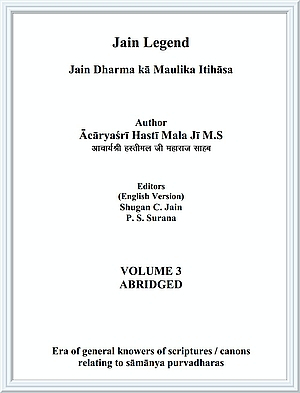Serious study of the history of Jainism for the period when the temple dwelling congregation was thriving and prospering reveals that; almost all the ācāryas (except those following the temple dwelling congregation) having faith and practice of Jain doctrine and code of conduct prescribed therein, got together and issued a unified, agreed code of conduct, including seeking alms for food, as per the scriptures and to be followed by Jain monks. In order to project a unified code of conduct, without the discrimination of a sect or a congregation, and acceptable to all, they started calling this new code of conduct as uniform and well organized (suvihita). In this way, the remaining congregations and ācāryas tried to join hands to protect and keep alive the tradition, pure scripture based doctrine and right code of conduct from the onslaught of relaxations based code of conduct introduced by the temple dwelling congregation. Their unified action in this direction kept the dwindling tradition of pure scripture based code of conduct and doctrine alive and not let it go into extinction even with the growing and dominating influence of temple dwelling congregation during that period. To protect and keep intact all the monks (male and female) practicing the unified scripture based conduct together, all the śramaṇas and śramaṇīs belonging to different congregations and gacchas were all called as belonging to Suvihita tradition. The image and influence of Suvihita tradition, instead of going into extinction actually increased to protect the code of conduct of śramaṇas based on scriptures and fundamental Jain doctrine and to circumvent the devastating growing influence of temple dwelling congregation during their (temple dwelling) hay days. All other congregations (except the temple dwelling congregation) felt honoured to be associated with Suvihita congregation.
In this way the growing bad influence, dominance and popularity of temple dwelling congregation resulted in an auspicious manner unifying all other congregations to a well thought out, logically developed and scripture based tradition or Suvihita tradition. In reality, under the guise of Suvihita tradition, a new tradition was given birth. Instead, to unify different gacchas and congregations together in the fundamental doctrine and code of conduct, this new initiative was undertaken to call them by one name Suvihita.
Due to the long dominance of temple dwelling tradition, their rituals and external practices of worshipping etc made inroads in the newly developed Suvihita tradition and thinking also.
 Acharya Hasti Mala
Acharya Hasti Mala
